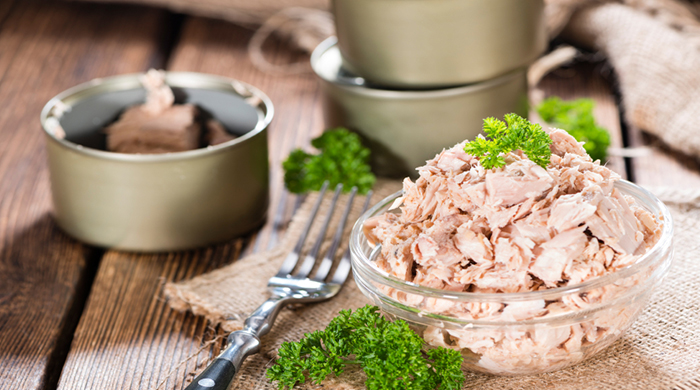The thought of admitting to eating Spam or tuna dripping oil out of a can was almost as shameful as admitting to spying on your sister while she was in the shower. Until now, that is. Top chefs are admitting to using and consuming canned food (I almost wept with joy when sommelier and restaurateur Ignatius Chan-who routinely serves such highbrow fare as Gillardeau oysters and Japanese snow crab-told an interviewer that he indulges in Ma Ling luncheon meat, “baked for an hour, at 50˚C, late at night, by myself.”), but it’s really the Spanish who have elevated the humble tin and turned it into a gourmet delicacy in its own right.

Forget the current fad for fermented food that’s dutifully doing the rounds. How much kimchi and sauerkraut can one consume and stay sane, for heaven’s sake? Feast your thoughts instead on Granada sturgeon, pickled pheasant, and top quality Galician clams—which normally sell for €600 per kilogram—in a cunningly designed tin where 20 perfect opalescent pieces cost €97, which you’ll agree is hardly the price of junk food. Indeed, the Spanish have mastered the tradition of treating tinned food with reverence. Gastronomic capital San Sebastian is punctuated by restaurant menus which regularly and unabashedly feature a selection of tinned foods, while Barcelona’s famed bodega Quimet y Quimet is a veritable shrine to canned produce that gastronomes flock to savour. Proprietor Quim Pérez’s exhaustive selection of mind-boggling tapas and montaditos are made using preserved ingredients, which makes absolute sense when you consider that Cantabrian anchovies are only harvested in April for optimum fat and flavour, but thanks to canning, diners can enjoy all year long.
Indeed, the Spanish have mastered the tradition of treating tinned food with reverence.
Known as conservas, food that’s preserved in cans and jars are beautifully packaged in Spain (and many parts of Europe) and contain a treasure trove of gourmet delicacies. Factors such as time of harvesting, preserving ingredients, and even ageing time all play a role in the ultimate flavour of the product. To wit: Catalan caviar, from sturgeon that’s been raised in the pristine waters of the Pyrenees in the Vall d’Aran, is prepared in the traditional Siberian method—fresh, not pasteurised—and they accordingly fetch a not inconsiderable €77 for a meagre 30-gram tin. The next time you’re in Barcelona, head for the historic colmados which specialise in conservas (as well as wines and spirits), of which the creme de la creme has to be Colmado Quilez and seek out such gems as their truffle foie gras, Kamchatka king crab, and 180-days aged Cantabrian anchovies. Just be forewarned that you will leave with arms laden, and it won’t behoof you to run out of luggage allowance.

Because when push comes to shove, you won’t want to be the gastronome who discovered too late the joys of canned cuisine. Best of all, you won’t need much more than a perfect loaf of bread, cold-pressed olive oil, and a salt-flake infused chunk of butter before you can settle down to a five-star meal replete with gourmet credentials, and all without even having to turn on the stove. Oh, and they look great on your shelves too. Now, what’s not to love about that?
| SHARE THE STORY | |
| Explore More |




